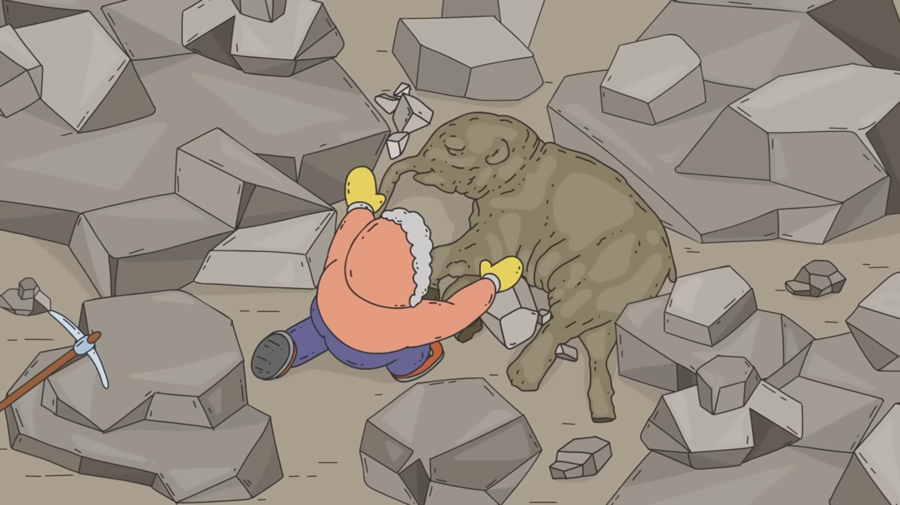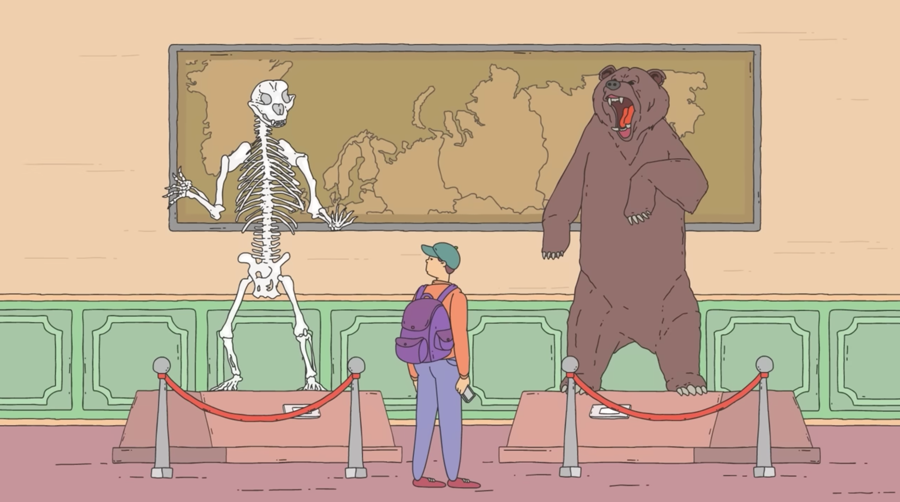“In June 2022, a gold miner in the Canadian Yukon made a remarkable discovery. While working on the traditional lands of the Tr’ondëk Hwëch’in First Nation, he uncovered the exceptionally well-preserved, frozen remains of a woolly mammoth calf that died 30,000 years ago. And this find isn’t the only of its kind…”
What have scientists and explorers found buried in the Arctic permafrost? And what do these discoveries indicate about carbon storage and climate change? Who is immediately affected by permafrost thaw? What are drunken forests? And what can we do to solve the problem?
Learn more about the far-reaching effects of permafrost melt, caused by the burning of fossil fuels and the resulting feedback loops it creates, in Ice Age Mummies Frozen in Time, a TED-Ed lesson by Brendan Rogers and Jessica Howard, directed by Denys Spolitak.
Plus, more about permafrost from WoodwellClimate.org:
“Located anywhere between a few centimeters to 4,900ft below the Earth’s surface, permafrost is soil composed of sand, gravel, organic matter, and ice that has been frozen for at least two consecutive years. Some has been frozen for centuries or even millennia, and it’s this ancient permafrost in the Arctic that holds the greatest significance for climate change…
“Scientists estimate that Arctic permafrost contains 1.4 trillion tonnes of carbon, an amount more than double what is currently in the Earth’s atmosphere. That carbon sink is stable as long as it stays frozen, but when it thaws, soil microbes break down the organic matter in permafrost and release carbon dioxide and methane into the atmosphere, increasing the rate of climate change.”
“In many places, forests, plants, and peat act as protective insulation for Arctic permafrost. This insulation helps keep carbon-storing organic matter, like plants and animals, as well as bacteria and archaea, frozen in the permafrost. However, climate change is already causing the Arctic to warm three to four times faster than the rest of the planet.”
Related reading from Woodwell Climate Research Center: Permafrost Pathways: A critical window of opportunity.
Plus, learn more about how we can slow our changing climate with these resourceful carbon storage, clean energy, and natural climate solutions videos on TKSST.
And watch these related videos, too:
• The Hidden Perils of Permafrost
• A 1,300-year-old wooden ski found in Norwegian ice
• Woolly mammoth remains discovered in a Michigan field
• What Are Tundras?
• Why are peatlands so important?
Bonus: How to Save Our Frozen Worlds: Clean Energy.
Also: Imagine a world without fossil fuels.
Curated, kid-friendly, independently-published. Support this mission by becoming a sustaining member today.





